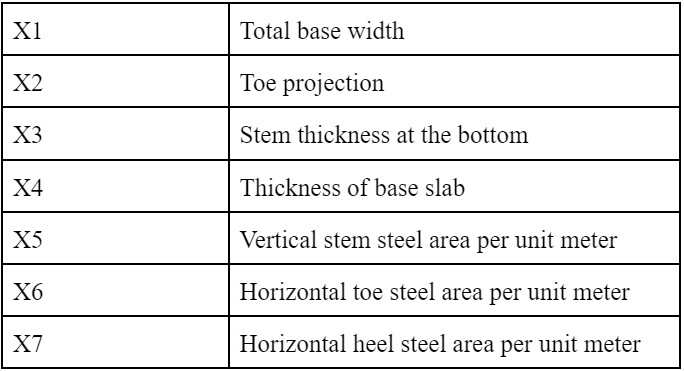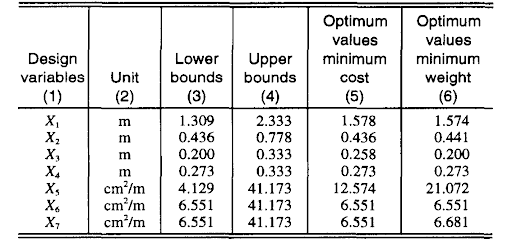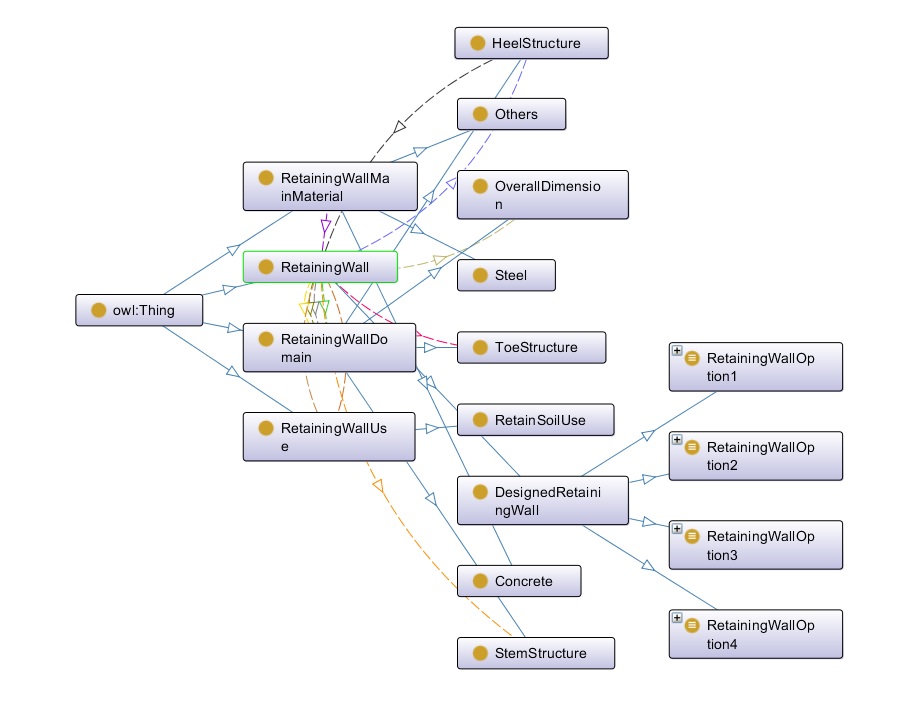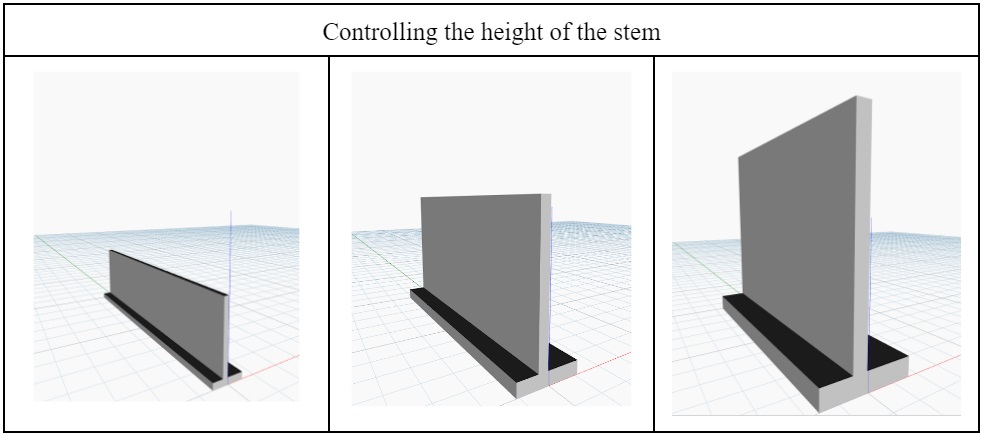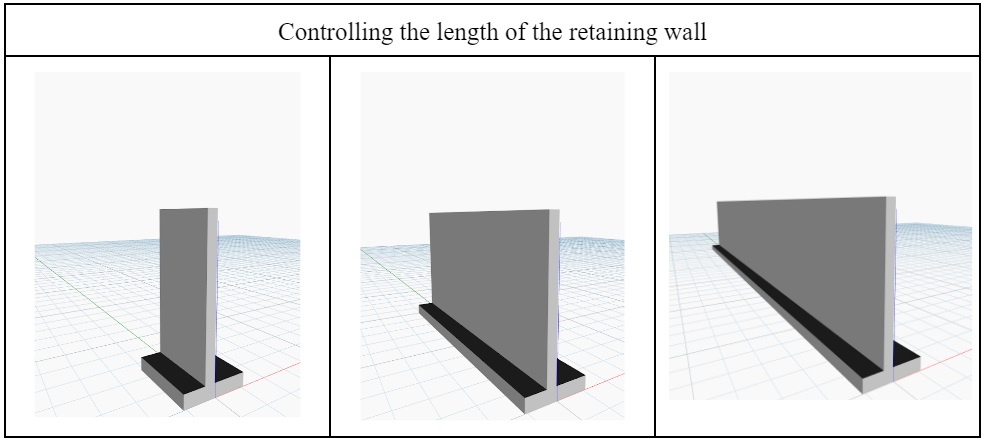Ontological Modeling
Introduction
A retaining wall is a structural element that retains and stabilizes soil and rock at a location where elevation changes abruptly[2]. Retaining walls need to possess the structural capacity to endure lateral pressure of the soil and rock[1]. There are several types of retaining walls, in this paper we will particularly focus on cantilever retaining walls, they are generally made from reinforced concrete. When it comes to designing a retaining wall there are four factors that need to be taken into consideration: factor of safety to overturning, factor of safety to sliding, allowable soil bearing pressure and the stress within the stem and the footing[2]. In this paper the optimum design of cantilever retaining wall is derived from another study that focused on achieving the optimum value while maintaining two objectives, one of them being minimum weight, the other being minimum cost[3]. Previously when designing a cantilever retaining wall, the minimum and maximum design bounds were used, but the minimum is not stable enough and the maximum is expensive and provides more than necessary structural stability.
Mathematical model of reinforced concrete cantilever retaining wall[3]
Design variables for reinforced concrete cantilever retaining wall[3]
Purpose and Scope
To design a retaining wall several factors have to be kept in mind, in order to make the structure acceptable against failure of overturning and sliding. Generally when a retaining wall is designed, the maximum and the minimum values for the amount of reinforcement and the dimension of the retaining wall is chosen. In this paper optimum values are chosen as well based on the minimum amount of weight and cost[3]. An ontology was created for a retaining wall that needed to satisfy the elevation of 3 meters. This ontology can be accessed when designing a retaining wall and looking for the different types of materials and design parameters that are involved in the process. This ontology can also work in integration of bigger ontologies of a larger project that needs to include a retaining wall as part of the design model. The purpose is to put emphasis on the optimum design of a retaining wall by keeping the objective of minimum weight and cost at the forefront. The ontology provides the amount of reinforcement needed for the design, as well as the dimension of the structure and the name of the different components of the retaining wall.
For a cantilever retaining wall of stem height of 3m, the following variables were collected[3]
The values of X5, X6 and X7 represent the area of steel for each horizontal meter of the retaining wall. With the help of the area of steel we can determine the number of bars and the amount of spacing.
After creating the ontology, the result shows the Ontograph above and it can be further expanded to show the number of options for different types of reinforcement based on the minimum and maximum value of strength, and for option 3 and option 4 we have the parameters for optimum value while keeping the objective of minimum weight and minimum cost.
Conclusion
This ontology was created for designing a retaining wall, the design options were provided for the minimum and maximum values, as well as two optimum values minimum cost and minimum weight. This ontology can be used by designers to provide the necessary and desired parameters and the design provided in the ontology is for 1m of horizontal retaining wall, based on this the designer can figure out the parameters needed in a larger context. The ontology shows the dimensions options and the reinforcement options for each desired outcome.
Parametric Modeling
Introduction:
Designing the geometric shape of a retaining wall requires calculations that define the relationship between the different parts of the retaining wall in relation to the height of its stem. This means that the height of the stem is one of the deciding factors for the retaining wall. If we decide to change the height of the stem, the other parts have to be adjusted accordingly. For this reason, if a retaining wall is included as part of a large project, it is important that every time the height of the stem is changed, the rest of the system is adjusted accordingly. With the help of Dynamo, it is possible to create a model that is automatically adjustable. We have four values that are depended on the height of the stem based on the minimum size of a retaining wall and these values are[3]:
H= Height of Stem
X1 = Total base width = 0.4H(12/11)
X2 = Toe projection = [0.4H912/11)]/3
X3 = Stem thickness at the bottom = 0.06*H
X4 = Thickness of base slab = [H(12/11)]/12
Mathematical model of reinforced concrete cantilever retaining wall [3]
The positioning of the stem in relation to the base slab is the parameter that decides the factor of safety for overturning and the length of the toe projection has a relation to the value of the length of the stem. In Dynamo it is possible to model a simple retaining wall that can be parametrized by creating two cuboids and defining the relationship between those two cuboids.
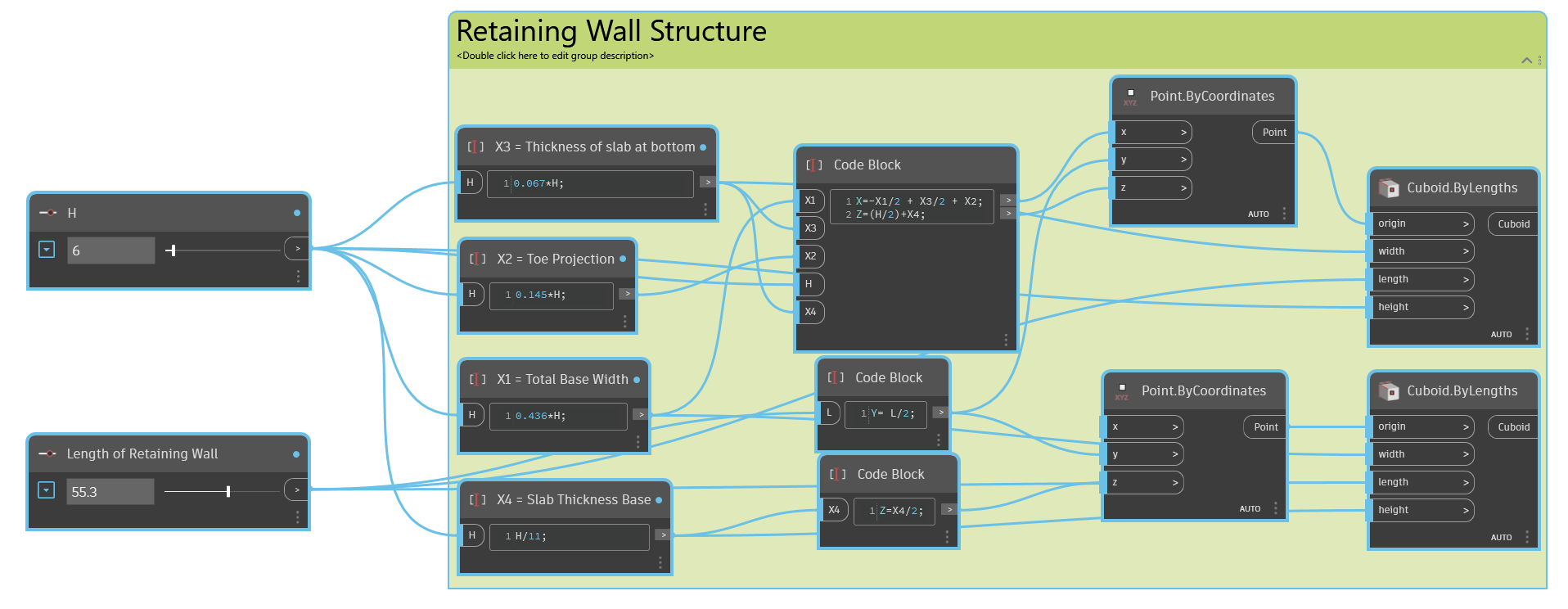
By defining the relationship between the different parts of the retaining wall, the structure can be parametrized by simply increasing two values; Height of the stem and the length of the entire retaining wall.
According to the requirements of the space that is being explored, the structural parts of a retaining wall can be changed, and since the height of the stem is one of the deciding factors for a retaining wall, the structure can be changed parametrically by simply the relationship of the parts of the retaining wall in accordance to the stem height.
Here we can see in the table below that by simply redefining the relationship of the structural parts in accordance with the Stem Height we can create retaining walls with no heels or no stem[4].
And because the relationship between the structural components of the retaining wall has already been defined, the elevation of the stem does not overlap with the slab.
References
[1] Koopialipoor, M., Murlidhar, B. R., Hedayat, A., Armaghani, D. J., Gordan, B., & Mohamad, E. T. (2020). The use of new intelligent techniques in designing retaining walls. Engineering with Computers, 36(1), 283-294.
[2] Brooks, Hugh, and John Nielsen. “Basics of retaining wall design.” HBA Publication 11 (2010).
[3] Sarıbaş, A., & Erbatur, F. (1996). Optimization and sensitivity of retaining structures. Journal of Geotechnical Engineering, 122(8), 649-656.
[4] Kalateh-Ahani, M., & Sarani, A. (2019). Performance-based optimal design of cantilever retaining walls. Periodica Polytechnica Civil Engineering, 63(2), 660-673.
